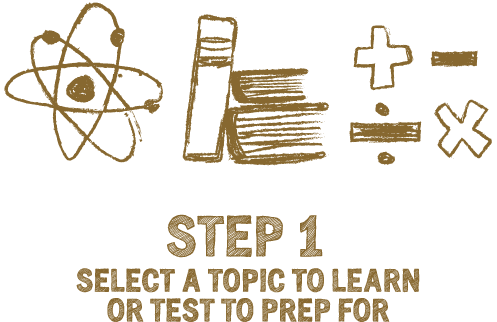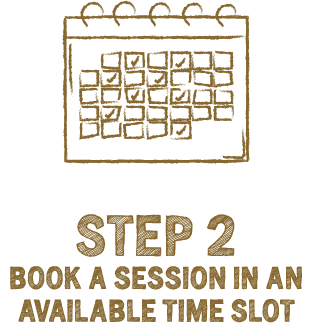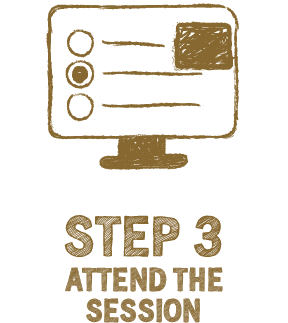
4th Grade Online Tutoring
Our 4th Grade Expert Tutors help your Child Build a Strong Foundation and Master the Concepts of Math, Science & English.
Personalized Online Tutoring Plan for 4th grade

PERSONALIZED ONLINE TUTORING

CAREFULLY DESIGNED SESSIONS PLAN & COURSES

SUBJECT & GRADE SPECIFIC EXPERTS

INDIVIDUALIZED WORKSHEETS/ HOMEWORK AFTER EVERY SESSION
3 Easy Steps to learn with an Online Live Expert Tutor





No credit card required. No obligation to purchase
Grade 4 Diagnostic Test
Here’s a brief summary of fundamental concepts included in our 4th grade tutoring program.
| Standard | Common Core Area | Topic |
|---|---|---|
| Math.CC.4.G.A.1 | Geometry | Angle types |
| Drawing rays, lines, and line segments | ||
| Recognizing rays, lines, and line segments | ||
| Recognizing angles | ||
| Drawing right, acute, and obtuse angles | ||
| Recognizing parallel and perpendicular lines | ||
| Math.CC.4.G.A.2 | Classifying shapes by line and angle types | |
| Recognizing triangle types | ||
| Quadrilateral types | ||
| Math.CC.4.G.A.3 | Axis of symmetry | |
| Math.CC.4.MD.A.1 | Measurement and Data | Converting larger units to smaller units |
| Unit sense | ||
| Math.CC.4.MD.A.2 | Time word problems | |
| Converting money word problems | ||
| Math.CC.4.MD.A.3 | Area problems | |
| Area and perimeter of rectangles word problems | ||
| Math.CC.4.MD.B.4 | Interpreting dot plots with fraction addition and subtraction | |
| Math.CC.4.MD.C.5 | Benchmark angles | |
| Naming angles | ||
| Benchmark angles | ||
| Math.CC.4.MD.C.6 | Measuring angles | |
| Drawing angles | ||
| Math.CC.4.MD.C.7 | Decomposing angles | |
| Math.CC.4.NBT.A.1 | Number and Operations in Base Ten | Multiplying whole numbers by 10 |
| Creating largest or smallest number | ||
| Dividing whole numbers by 10 | ||
| Multiplying and dividing by 10 challenge | ||
| Understanding place value when multiplying and dividing by 10 | ||
| Place value blocks | ||
| Math.CC.4.NBT.A.2 | Comparing multi-digit numbers: Place value challenge | |
| Comparing multi-digit numbers | ||
| Place value introduction | ||
| Numbers in expanded form | ||
| Whole number place value challenge | ||
| Numbers in written form | ||
| Math.CC.4.NBT.A.3 | Rounding whole numbers | |
| Math.CC.4.NBT.B.4 | Subtraction within 1000 | |
| Addition within 1000 | ||
| Math.CC.4.NBT.B.5 | Multiplying 4 digits by 1 digit with visual models | |
| Multiplication without carrying | ||
| Multiplication using place value understanding | ||
| Multiplying 2 digits by 2 digits with area models | ||
| Multiplying 2 digits by 2 digits | ||
| Multiplication with carrying | ||
| Math.CC.4.NBT.B.6 | Dividing by one-digit numbers (no remainders) | |
| Division with remainders | ||
| Division using place value understanding | ||
| Dividing by one-digit numbers (visual models) | ||
| Math.CC.4.NF.A.1 | Number and Operations: Fractions | Equivalent fractions |
| Equivalent fractions (with fraction models) | ||
| Math.CC.4.NF.A.2 | Common denominators | |
| Visually comparing fractions with unlike denominators | ||
| Equivalent fractions and different wholes | ||
| Ordering fractions | ||
| Comparing fractions with different numerators and denominators | ||
| Comparing fractions and mixed numbers | ||
| Math.CC.4.NF.B.3 | Converting mixed numbers and improper fractions | |
| Subtracting fractions with common denominators | ||
| Adding fractions with common denominators | ||
| Math.CC.4.NF.B.4 | Multiplying fractions and whole numbers intuition | |
| Multiplying Fractions and Whole Numbers: Equivalent Expressions | ||
| Math.CC.4.NF.C.5 | Equivalent fractions with denominators of 10 and 100 intuition | |
| Adding fractions with 10 and 100 as denominators | ||
| Decompose fractions with denominators of 100 | ||
| Equivalent fractions with denominators of 10 and 100 | ||
| Math.CC.4.NF.C.6 | Decimals on the number line | |
| Fraction-decimal intuition | Decimal intuition with grids | |
| Rewriting fractions as decimals | ||
| Decimals in words | ||
| Rewriting decimals as fractions | ||
| Math.CC.4.NF.C.7 | Comparing decimals visually | |
| Comparing decimals and fractions | ||
| Comparing decimals (tenths and hundredths) | ||
| Math.CC.4.OA.A.1 | Operations and Algebraic Thinking | Comparing with multiplication word problems |
| Comparing with multiplication | ||
| Math.CC.4.OA.A.2 | Multiplication and division word problems | |
| Math.CC.4.OA.A.3 | Multi-step word problems with whole numbers | |
| Math.CC.4.OA.B.4 | Identifying factors and multiples | |
| Divisibility intuition | ||
| Composite numbers | ||
| Prime numbers | ||
| Factor pairs | ||
| Math.CC.4.OA.C.5 | Math patterns |
| SECTION | NGSS CODE | CORE IDEAS | TOPICS |
|---|---|---|---|
| PHYSICAL SCIENCES | 4-PS3.C | ENERGY AND MOTION | Relationship between Energy and Speed |
| Acceleration and Velocity | |||
| Potential and Kinetic Energy | |||
| 4-PS3 | MOTION AND FORCES | Contact Forces | |
| Friction and Inertia | |||
| Gravitational Potential Energy | |||
| Laws of Motion | |||
| Energy in Everyday Life | |||
| 4-PS4 | WAVES AND INFORMATION | Ocean Waves | |
| Uses of Waves | |||
| 4-PS4.B | Characteristics of Waves | ||
| 4-PS3-B | SOUND AND LIGHT | How does sound travel? | |
| Sound Echoes and Dolphins | |||
| Pitch and Loudness | |||
| How do we talk and hear? | |||
| 4-PS4.B | Electromagnetic Radiation | How does light travel? | |
| Sources of Light | |||
| Reflection and Refraction | |||
| Transparent, Translucent and Opaque | |||
| The Visible Spectrum | |||
| How do we see things? | |||
| HEAT | Heat and Temperature | ||
| Energy from the Sun | |||
| PS3.B | Transferring Heat | ||
| 4-PS3-2 and 4-PS3-4 | ELECTRICITY AND MAGNETISM | Fundamentals of Electricity | |
| Static Electricity | |||
| Electric Circuits | |||
| Using Electrical Energy | |||
| Conductors and Insulators | |||
| Magnets | |||
| Electromagnets | |||
| Motors and Generators | |||
| LIFE SCIENCES | FROM MOLECULES TO ORGANISMS – STRUCTURES AND PROCESSES (PLANTS) | Parts of a Plant | |
| 4-LS.1 | Pollination and Fertilization | ||
| Seed dispersal and Germination | |||
| Photosynthesis | |||
| Plants Grow and Change | |||
| Oxygen, Food and Water | |||
| FROM MOLECULES TO ORGANISMS – STRUCTURES AND PROCESSES (ANIMALS | Main Structures in an Animal Body | ||
| Classification of Animals – Invertebrates and Vertebrates | |||
| The Human Eye | |||
| The Human Brain | |||
| Digestion | |||
| Responses to Environment | |||
| Movement and Migration | |||
| Life Cycle of Animals | |||
| Food Chain | |||
| EARTH SCIENCES | EARTH’S PLACE IN THE UNIVERSE | Rocks and Minerals | |
| 4-ESS1 | Erosion and Weathering | ||
| Types of Rocks | |||
| Fossils in Rock | |||
| Water Cycle | |||
| 4-ESS1.C | EARTH’S SYSTEMS – Processes that shape the Earth | Layers of the Earth and Continental Drift | |
| 4-ESS2 | Topography | ||
| Plate Tectonics | |||
| Earthquakes and Volcanoes | |||
| Effects of water, ice and wind on Earth | |||
| EARTH AND HUMAN ACTIVITY | Energy and Fuels | ||
| 4-ESS3 | Solar Energy and other Renewable Resources | ||
| Mining and Non-Renewable Resources | |||
| Natural Hazards | |||
| Reducing the impacts of Natural Hazards | |||
| ENGINEERING DESIGN | Defining and Delimiting Engineering Problems | ||
| 3-5-ETS1 | Developing Possible Solutions | ||
| Optimizing the Design Solution |
| GRADE 4 – COMMON CORE SECTION | COMMON CORE CODE | COMMON CORE STANDARD (ANCHOR) |
|---|---|---|
| Conventions of Standard English: | CCSS.ELA-LITERACY.L.4.1.A-G CCSS.ELA-LITERACY.L.4.1. B CCSS.ELA-LITERACY.L.4.1.C CCSS.ELA-LITERACY.L.4.1.A |
– Reflexive pronouns – Progressive tenses – Modals – Order of Adjectives – Prepositional phrases – Complete sentences – Homophones |
| CCSS.ELA-LITERACY.L.4.2.A – D | -Capitalization -Commas and quotations -Compound sentences -Spellings |
|
| Knowledge of Language: | CCSS.ELA-LITERACY.L.4.3.A CCSS.ELA-LITERACY.L.4.3.B CCSS.ELA-LITERACY.L.4.3.C |
-Usage of language -Usage of punctuation -Formal and Informal language |
| Vocabulary Acquisition and Use: | CCSS.ELA-LITERACY.L.4.4.A CCSS.ELA-LITERACY.L.4.4.B CCSS.ELA-LITERACY.L.4.4.C |
-Context as clue -Greek and Latin affixes -Use of glossaries and dictionaries |
| CCSS.ELA-LITERACY.L.4.5.A – C CCSS.ELA-LITERACY.L.4.6 |
-Metaphors and Similes -Synonyms and Antonyms; Homographs -Idioms and Proverbs -Academic and domain specific words |
|
| Reading: Literature Key ideas and details |
CCSS.ELA-LITERACY.RL.4.1 CCSS.ELA-LITERACY.RL.4.2 CCSS.ELA-LITERACY.RL.4.3 |
– Predictions from a text – Theme and summary of a text – Characters and setting of a story |
| Craft and Structure: | CCSS.ELA-LITERACY.RL.4.4 CCSS.ELA-LITERACY.RL.4.5 CCSS.ELA-LITERACY.RL.4.6 |
– Words and meanings from a text – Difference between poem, drama and prose |
| Integration of Knowledge and Ideas: | CCSS.ELA-LITERACY.RL.4.7 CCSS.ELA-LITERACY.RL.4.9 |
– Text with audio and visual aids – Compare and contrast similar themes |
| Range of Reading and Level of Text Complexity: | CCSS.ELA-LITERACY.RL.4.9 | – Read and comprehend different genres of literature |
| Reading: Informational Text Key ideas and details |
CCSS.ELA-LITERACY.RI.4.1 CCSS.ELA-LITERACY.RI.4.2 CCSS.ELA-LITERACY.RI.4.3 |
– Details and examples of a text – Summarize the text – Use of information in a text |
| Craft and Structure: | CCSS.ELA-LITERACY.RI.4.4 CCSS.ELA-LITERACY.RI.4.5 CCSS.ELA-LITERACY.RI.4.6 |
-Context to clues -Structure of a text -Compare and contrast two views on the same topic |
| Integration of Knowledge and Ideas: | CCSS.ELA-LITERACY.RI.4.7 CCSS.ELA-LITERACY.RI.4.8 CCSS.ELA-LITERACY.RI.4.9 |
– Interpret information presented visually,orally or quantitatively – Reasons and evidence to support specific points – Integration of information from two texts on the same topic |
| Range of Reading and Level of Text Complexity: | CCSS.ELA-LITERACY.RI.4.10 | Read and comprehend informational texts |
| Phonics and Word Recognition: | CCSS.ELA-LITERACY.RF.4.3 | Decoding New words |
| Fluency: | CCSS.ELA-LITERACY.RF.4.4 A – C | Read with sufficient accuracy and fluency to support comprehension |
| Writing:Text types and Purposes | CCSS.ELA-LITERACY.W.4.1 A – D | – Opinion writing – Writing informative texts – Writing narratives |
| Production and Distribution of Writing: | CCSS.ELA-LITERACY.W.4.2 A – E | – Organized writing – Editing – Collaborative writing and keyboard skills |
| Vocabulary Acquisition and Use: | CCSS.ELA-LITERACY.W.4.3 A – E | Determine or clarify the meaning of unknown and multiple-meaning words and phrases based on grade 1 reading and content, choosing flexibly from an array of strategies |
| Research to Build and Present Knowledge: | CCSS.ELA-LITERACY.W.4.4 CCSS.ELA-LITERACY.W.4.5 CCSS.ELA-LITERACY.W.4.6 |
– Research projects – Listing sources – Setting, events and characters of a story – Reasons and evidences |
| Range of Writing: | CCSS.ELA-LITERACY.W.4.7 CCSS.ELA-LITERACY.W.4.8 CCSS.ELA-LITERACY.W.4.9 |
Writing over long and short time frames |
| Speaking and Listening: Comprehension and Collaboration: |
CCSS.ELA-LITERACY.SL.4.1 A-D CCSS.ELA-LITERACY.SL.4.2 CCSS.ELA-LITERACY.SL.4.3 |
– Collaborative discussions – Rules and regulations – Asking questions, commenting and answering – Review the key ideas |
| Presentation of Knowledge and Ideas: | CCSS.ELA-LITERACY.SL.4.4 CCSS.ELA-LITERACY.SL.4.5 CCSS.ELA-LITERACY.SL.4.6 |
– Report a text with facts – Adding recordings and visual displays – Formal and informal language. |
Online Tutoring Pricing
Expert 1-on-1 Personal Tutoring, Now Affordable to All.
Every online tutoring session has 50 to 55 minutes of teaching time.
1 Session
- 1 Month Validity
5 Sessions
- 1 Month Validity
10 Sessions
(Most Popular)- 3 Months Validity
50 Sessions
- 6 Months Validity
100 Sessions
- 12 Months Validity
Test Prep Help
If you think that your child is gifted and needs to advance a grade or two then look no further than eTutorWorld! We will assess her talents and nudge her gently towards her goal. The student will work with a qualified teacher to ace the test without feeling stressed. 4th grade tutoring online at eTutorWorld can prepare students for the following tests by improving their test taking skills as required.
WHAT OUR CUSTOMERS HAVE TO SAY
It was my first experience with an online tutor for my child. During this pandemic it was basically the only way to go. I made the best choice when I choose etutorworld. The tutor was awesome and patient with her and he provided her with ways to study. I will recommend etutorworld to anyone that is seeking to adhere to social distancing and even for future studies. GREAT JOB!!
Aleksey Gaziev
Very good structure and flow of the sessions, materials used are also good - overall very positive experience.
Veronica S Lennon
Excellent quality and service from both an academic and as admin point of view!
Shaivi Shah
Kind, well qualified and very responsible teacher. Would like to try other subjects and want to have my second child tutored. Great value, too.
Leah Dixon
Why your child needs eTutorWorld’s 4th Grade Online Tutoring Program?
- Pre-scheduled tutoring sessions at your child’s convenient days and times.
- One-on-one online tutoring with a personalized coach
- Subject Tutor continuity and homework help
- Sessions can be scheduled by parent/student or just call our representative!
- Certified teachers with specialized training in e-tutoring young students
- Ongoing assessments and up-to-date progress reports
- 24X7 Support team to help you and answer your questions
eTutorWorld’s Grade 4 English tutors make sure that your child improves and excels at English Reading, Creative Writing and Grammar. While English reading, writing and speaking are often an integral part of a 4th Grader’s life, when it comes to perfection in English Language Arts, most 4th Graders are lagging behind. Eventually the ‘tech English’ that they use on a regular basis, does not help in any way to score well at school or on other tests. Help for Grade 4 English Language Arts and Test Prep for Standardized tests like the SCAT (Johns Hopkins CTY, SSAT, ISEE and also the ACT can be accessed from the comfort of your home. Now you or your child can save a lot of money and time on travelling to a Learning Center or a tutor to score better grades.





